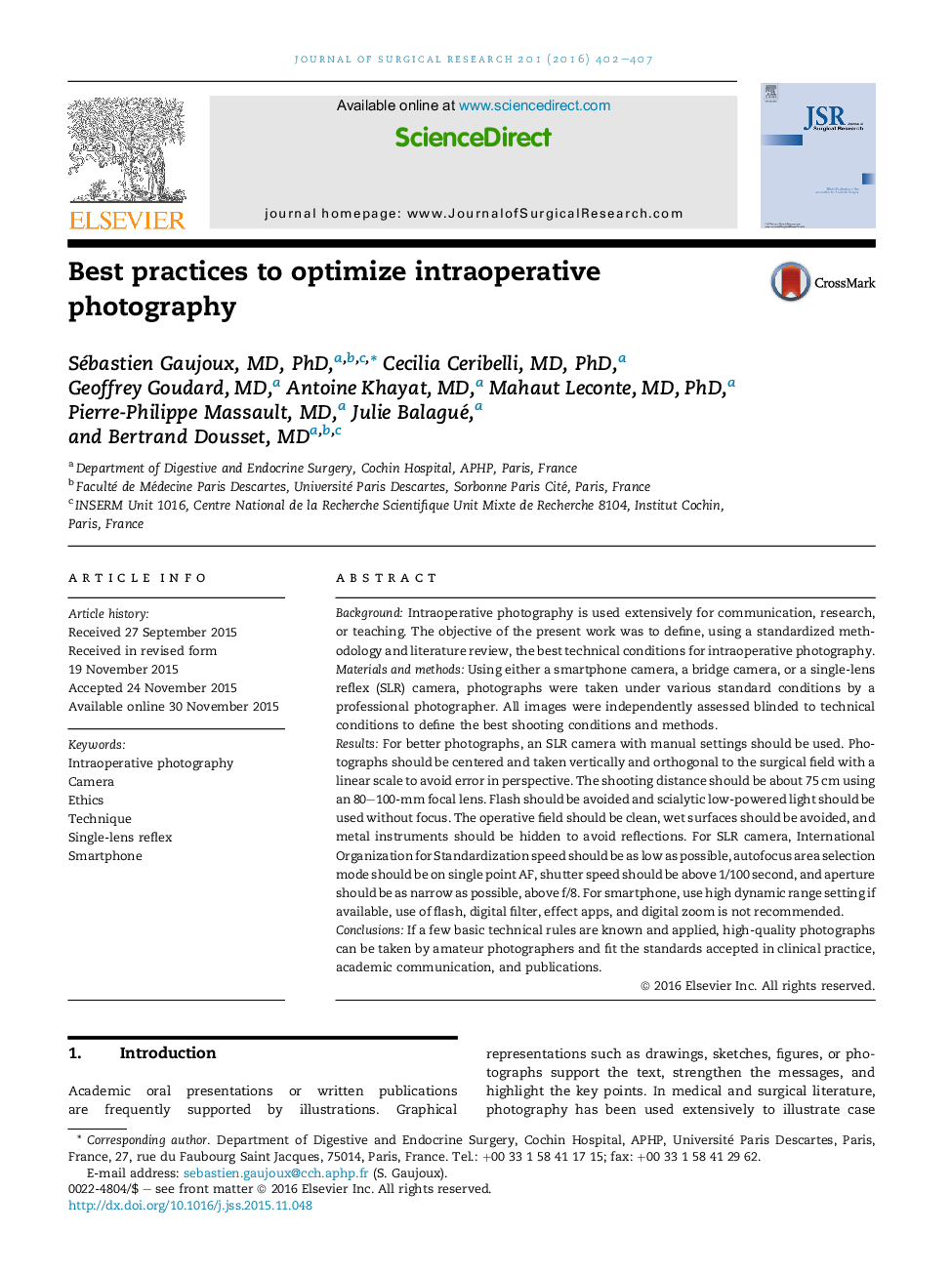| Article ID | Journal | Published Year | Pages | File Type |
|---|---|---|---|---|
| 4299385 | Journal of Surgical Research | 2016 | 6 Pages |
BackgroundIntraoperative photography is used extensively for communication, research, or teaching. The objective of the present work was to define, using a standardized methodology and literature review, the best technical conditions for intraoperative photography.Materials and methodsUsing either a smartphone camera, a bridge camera, or a single-lens reflex (SLR) camera, photographs were taken under various standard conditions by a professional photographer. All images were independently assessed blinded to technical conditions to define the best shooting conditions and methods.ResultsFor better photographs, an SLR camera with manual settings should be used. Photographs should be centered and taken vertically and orthogonal to the surgical field with a linear scale to avoid error in perspective. The shooting distance should be about 75 cm using an 80–100-mm focal lens. Flash should be avoided and scialytic low-powered light should be used without focus. The operative field should be clean, wet surfaces should be avoided, and metal instruments should be hidden to avoid reflections. For SLR camera, International Organization for Standardization speed should be as low as possible, autofocus area selection mode should be on single point AF, shutter speed should be above 1/100 second, and aperture should be as narrow as possible, above f/8. For smartphone, use high dynamic range setting if available, use of flash, digital filter, effect apps, and digital zoom is not recommended.ConclusionsIf a few basic technical rules are known and applied, high-quality photographs can be taken by amateur photographers and fit the standards accepted in clinical practice, academic communication, and publications.
